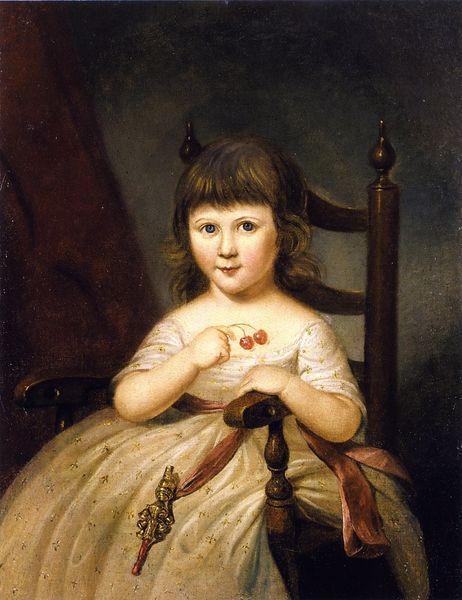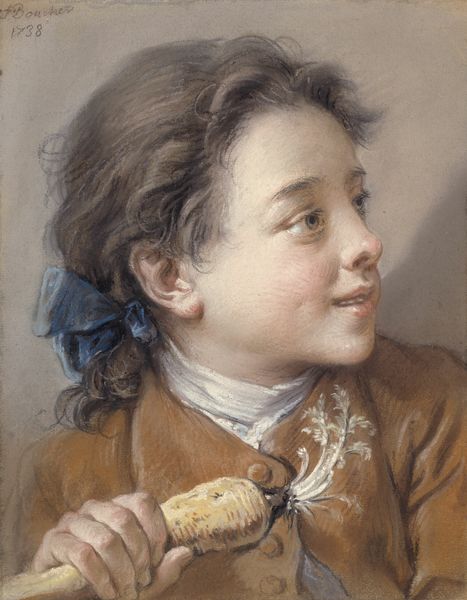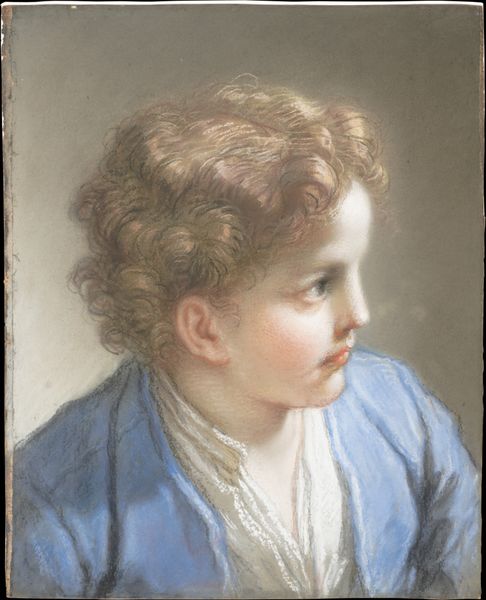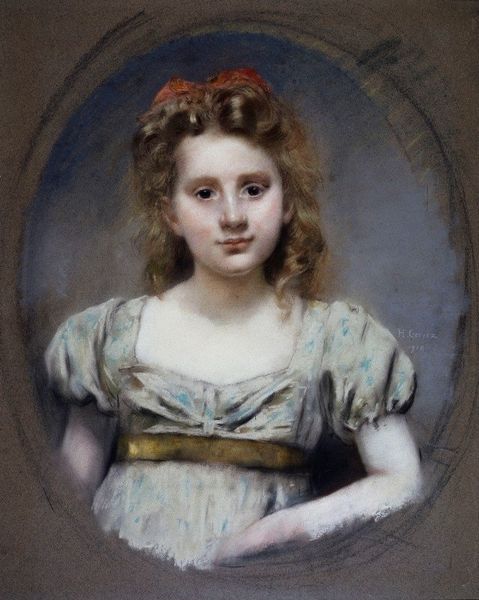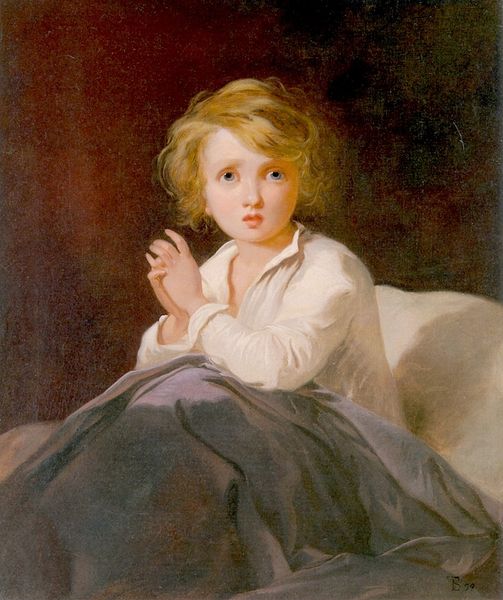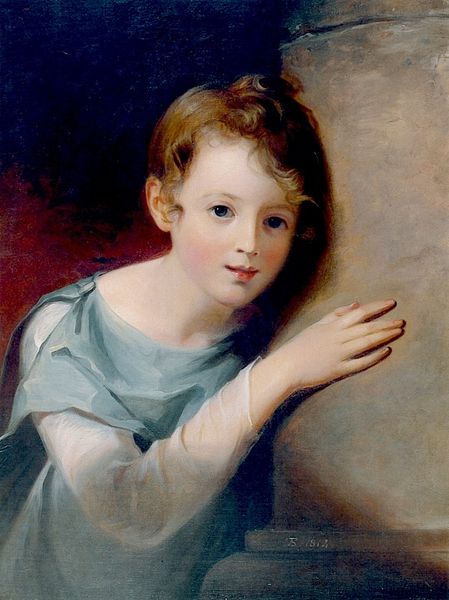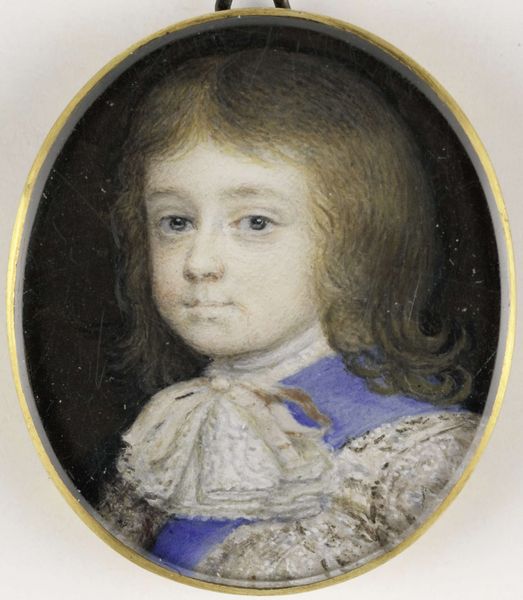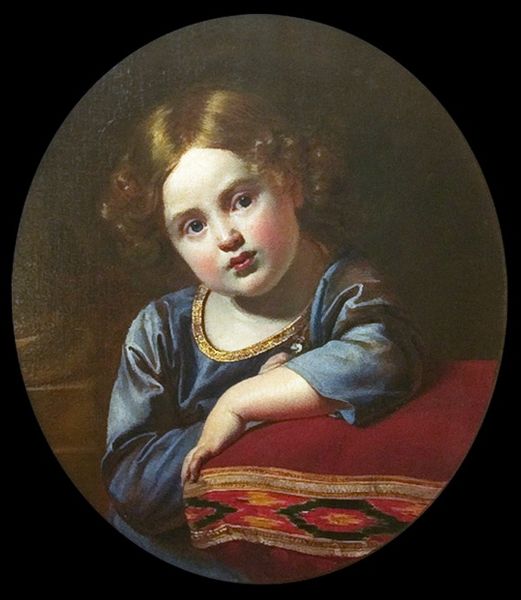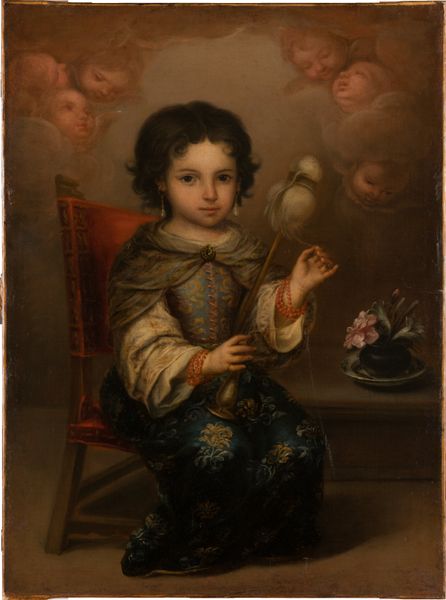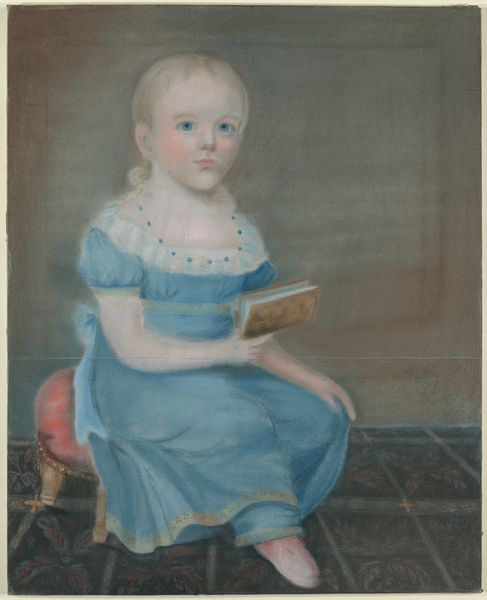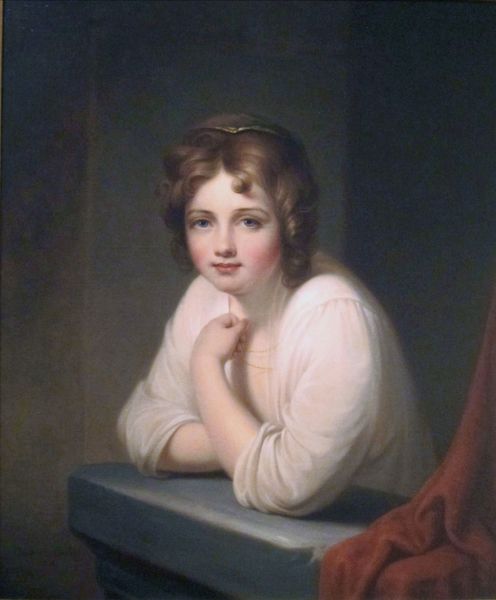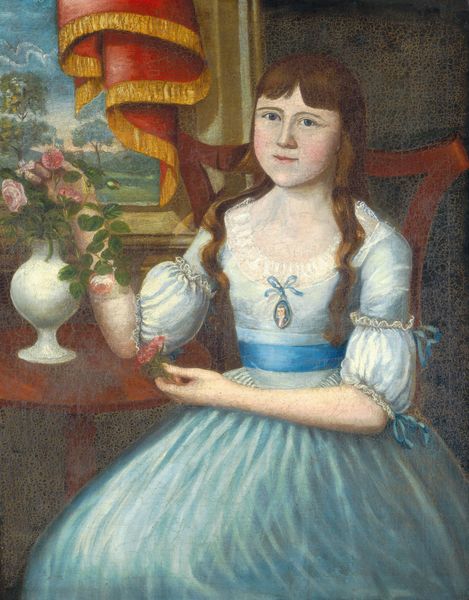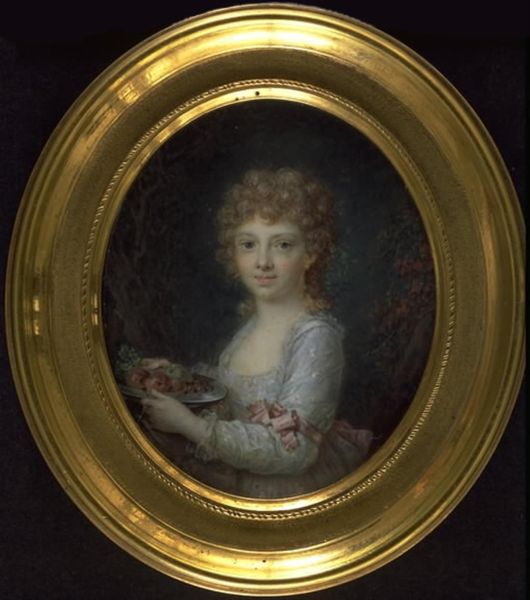
Portret van een jongen, zittend in een raamnis en gekleed in een blauw jasje 1830 - 1850
0:00
0:00
gouache
#
portrait
#
gouache
#
gouache
#
romanticism
#
genre-painting
#
miniature
Dimensions: height 40.6 cm, width 33 cm
Copyright: Rijks Museum: Open Domain
Jean Augustin Daiwaille painted this portrait of a boy in a blue jacket, likely in the early 19th century, using pastels on paper. This image gives us insight into the world of the Dutch upper classes at that time. Note the boy's clothing, the abundance of fruit, and the glass of milk with a pastry. These details speak to a life of privilege. The boy's act of writing, with a book nearby, suggests an emphasis on education and intellectual pursuits, further reinforcing his social standing. But it is the Cupid frieze below the boy that raises questions about the image's intended message. Are these putti allusions to romantic love or sentimental attachments? Does the presence of these figures suggest that the boy is on the cusp of adulthood and romantic life? Or do the figures simply represent childhood innocence? As art historians, we look to visual and cultural clues from the time, such as fashion trends, childhood literature, and popular imagery, to better understand how contemporary audiences might have interpreted such symbols. In the end, the meaning of this portrait remains open to interpretation, dependent on the social and institutional contexts that framed its creation and reception.
Comments
No comments
Be the first to comment and join the conversation on the ultimate creative platform.
